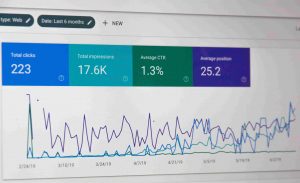Your Complete Guide To Building a Micro-SaaS
The concept of Micro-SaaS has gained popularity in recent years due to its low barrier to entry and potential for high profits.
Entrepreneurs can build a Micro-SaaS company with minimal time and monetary investment and still generate significant revenue by catering to a small but loyal customer base.
Whether you’re looking to build a micro SaaS or to buy a micro SaaS, in this article, I’m going to guide you through the world of micro-SaaS’ and give you the advice you need to build your own.
If you’re looking for some great examples of successful micro-SaaS’ to help you get inspired, check out this great guide by the SaaS University.
What is a SaaS?
First up, what is a SaaS?
SaaS stands for Software as a Service and is a business model where a software solution is hosted and provided to users over the internet.
Rather than buying a licence to use the software outright, users pay a subscription fee to have access to the application.
This makes a SaaS business an incredibly attractive option for entrepreneurs, as it offers reliable and repeated income from customers.
What is a Mico-SaaS?
As the name implies, a micro-SaaS is a SaaS business scaled down.
In practical terms, that means that a micro-SaaS targets a specific (and often small) problem for a particular target market. These businesses are typically run by a small team or even a single individual, meaning that they need very few customers to be profitable compared to a traditional business.
How is a Micro-SaaS Different from a SaaS?
Micro-SaaS differs from the traditional SaaS model in several ways:
- Niche Market Appeal: Micro-SaaS focuses on serving a specific niche market, catering to specialized needs and targeting a smaller audience.
- Minimal Team: Micro-SaaS businesses are typically operated by a small number of individuals, often with a sole founder or a small team managing all aspects of the business.
- Low Costs: Compared to conventional SaaS models, Micro-SaaS tends to have lower operating costs, as it may not require extensive infrastructure or a large workforce.
- Small User Base: Micro-SaaS typically serves a smaller user base compared to larger-scale SaaS companies. The focus is on providing specialized solutions to a specific customer segment.
- Revenue Generation without Funding: Unlike traditional SaaS models that often rely on external funding, Micro-SaaS businesses have the potential to generate revenue without the need for significant investment or funding.
- Lower Profits: While Micro-SaaS can generate revenue, the profit margins may be lower due to the smaller scale of operations and limited resources.
- Individual and Freelancer Appeal: Micro-SaaS tends to attract individuals, entrepreneurs, and freelancers who prefer a more independent and hands-on approach to their business ventures.
- Streamlined Decision-Making: With fewer layers of bureaucracy, Micro-SaaS enables faster decision-making and greater agility in responding to customer needs.
It’s important to note that both conventional SaaS and Micro-SaaS models have their advantages and disadvantages. Let’s cover them now.
What are the Advantages of Micro-SaaS?
There are a number of advantages to creating a mico-SaaS company, including:
- Less Competition: Because micro-SaaS products are targeting a relatively small market, larger companies will often ignore these sections of the market, allowing smaller businesses to thrive
- Less Maintenance: Due to the smaller size of the products, micro-SaaS’ are often much easier to maintain and build upon
- Single Marketing Chanel: Normally, there are only one or two effective marketing channels for micro-SaaS products, meaning that less time needs to be spent on product marketing to be successful
- No Need For Employees: Due to the small maintenance and marketing requirements of these products, they often don’t need any employees to run successfully, increasing profits
What are the Disadvantages of Micro-SaaS?
Although mico-SaaS products can be an incredibly rewarding business, there are some downsides:
- Growth Ceiling: Due to the size of the market, micro-SaaS products normally have a relatively low growth ceiling, meaning that you may quickly reach the maximum MRR that your micro-SaaS can provide
- Platform Risk: Normally, micro-SaaS products are built on top of another platform. Your product could be at risk if this platform becomes shutdown or dramatically increases its prices.
Should I Make a Micro-Saas?

So with all said and done, you might be asking yourself whether you should start a micro-SaaS business.
As with everything in business, the answer is it depends.
You should consider creating a micro-SaaS if:
- You Want a Lifestyle Business: Micro-SaaS businesses are ideal if you want a good business to run yourself and to cover your salary.
- You’re New To SaaS Businesses: Micro-SaaS businesses teach you all of the core skills needed to run a successful SaaS without the harsh competition and rapidly moving market
- You Want a Small Side Income: Micro-SaaS businesses don’t require lots of time to support and maintain and generally offer a small income, making it perfect for a small side project
Of course, the list above isn’t a comprehensive list of reasons to start a micro-SaaS business. The final decision comes down to your circumstances and what you want to achieve in your business.
Are Micro-SaaS Businesses Profitable?

Generally, a micro-SaaS’ core expenses go into hosting, marketing and freelancers.
Oftentimes these expenses are incredibly low, or even free, as they can be provided as part of the marketplace that the product is hosted on.
As a result, micro-SaaS companies can be an incredibly profitable business, as long as there is enough demand for the product.
How Do I Come Up With a Good Micro-SaaS Idea?
While you do still need to validate your startup idea, coming up with a good Micro-SaaS idea is relatively simple, as long as you follow the following steps:
Start with a Realistically Achievable Idea
Given the limited resources in a Micro-SaaS model, it’s important to have an idea that is realistically achievable. Use the Meat Grinder method suggested by Tyler Tringas to test the viability of your idea.
Use The Meat Grinder Method
Continuously think of business ideas and put them through the meat grinder. When you encounter a problem, brainstorm ways to solve it and outline your proposed solution as a potential business idea. Ask yourself the following questions:
- Can I make this? Assess whether you or your close circle possess the skills to build the product without outside help.
- Are people currently spending money on it? Determine if there is existing demand and if people are willing to pay for the solution you plan to offer.
- How will I get the first 25 customers? Consider strategies for acquiring your initial customer base and think about ways to create viral growth, leveraging word-of-mouth through your stakeholders and inner circle.
- If it works, will it be sustainable? Evaluate the long-term viability and profitability of your idea, considering potential costs and customer retention.
- Am I the right person to build this business? Ensure that you have a genuine interest in the problem you’re addressing and the people facing it. Building a micro SaaS business requires significant time and interaction with these individuals, so genuine interest is crucial.
Evaluate The Positive Answers
Evaluate the Positive Answers: If your idea survives the meat grinder and you have positive answers to the questions above, consider additional aspects
- Be 5x Better: Aim for your solution to be five times better than existing alternatives, either by being significantly cheaper or providing superior functionality.
- Know Your Audience: Understand your narrow target market and its preferences. Efficiently market your service by identifying the platforms and channels where your audience spends time.
- Find Excitement and Passion: Choose an idea and market that genuinely excites you. Your enthusiasm will help you convince others that your service matters and attract customers to your business.
- Address Small Businesses: Target small businesses, as they are easier to reach and close deals with compared to large corporations with complex bureaucracies. Tailor your service offerings accordingly.
- Consider Individuals and Freelancers: Individuals and freelancers are more accessible and open to new products and ideas. However, keep in mind that they typically have smaller budgets.
How Can I Get Inspired To Find A Micro SaaS Idea?

It’s incredibly difficult to come up with a great idea that people want to pay for. That’s why I’ve come up with 6 tips to help you find your micro-SaaS idea.
- Study Large SaaS Businesses: Analyze established SaaS businesses that have a diverse user base, each utilizing the software for their specific problems. Identify the most common problem faced by these users and fix it.
- Target a Growing Market: Focus on a market that is experiencing growth a lot of growth right now. A growing market indicates demand and competition within the industry. As a small micro-SaaS, you should have the agility to be able to quickly pivot and target your customer’s needs much better than a larger business.
- Observe Freelancers and Consultants: Engage in conversations with freelancers and consultants who work in the field related to your target market. Pay attention to the services they repeatedly offer to their clients. The repetition suggests a consistent need for those services.
- Identify Manual Tasks: Look for manual tasks that need to be performed periodically within the target market. These tasks may involve repetitive actions or processes that could potentially be automated.
- Automate the Tasks: Once you have identified manual tasks with recurring needs, explore the possibility of automating them through your niche SaaS solution. Design your product to provide automation, streamline processes, and offer convenience to the target audience.
- Read: Read inspiring posts about micro-SaaS products, such as this blog post by Rocket Gems which lists 70 different marketplaces where you can get inspiration and get your micro-SaaS off the ground.
While it goes without saying that you need to validate your startup idea with actual customers before you start working on your product, these tips should have given you some good ideas to get started with.
If you’re still looking for inspiration, I’ve written a complete guide to coming up with startup ideas, which I’d recommend you check out here.
How Can I Launch a Micro-SaaS?
After coming up with a great idea for your micro SaaS, there are a number of steps that you need to complete in order to launch your product.
While I’d recommend that you read my full guide on the things to do before launching your startup, and the strategies on how and where to launch your product, the basic tasks are:
- Validate that your business idea has potential
- Get at least 10 people to say that they would like to buy your product
- Build your MVP
- Determine your pricing strategy
- Launch your product
- Advertise to the people who you talked to in step 2
- Improve your product based on user feedback
My Top Tips For Starting a Micro-SaaS
As an experienced entrepreneur, I’ve had my fair share of learning opportunities along my business journey.
Let me take this minute to share with you 11 of my top tips for starting a micro SaaS business.
- Keep your MVP (Minimum Viable Product) development time within 3 weeks to make efficient use of limited resources.
- Focus on the core functionalities of your product to test what works well and what doesn’t.
- Prioritize delivering value to your customers, considering both current and future users.
- Embrace your small business status and be transparent with your audience about your learning journey.
- Avoid excessive branding efforts initially; focus on providing direct and relevant information to potential customers.
- Start with a single price point for your product to simplify the pricing and payment process.
- Initially, avoid allowing multiple users per account to minimize complexity and coding efforts.
- Utilize existing services and tools to streamline the development process of your MVP.
- Focus on essential features and leave out manual tasks that can be addressed later in the product’s roadmap.
- Once your MVP is ready, prioritize customer acquisition strategies to reach and engage with your target audience effectively.
4 Micro SaaS Examples
To help inspire you as to what can be done, let’s have a look at 7 examples of successful micro SaaS companies in the wild.
Carrd
Carrd is a user-friendly one-page website builder created by AJ, a web developer and designer.
Originally, it was meant to be a simple site builder but turned into a tool for making online business cards. You can use Carrd for personal portfolios and more, with a free account option and a Pro version offering extra features.
Storemapper
Storemapper, founded by Tyler Tringas, addresses the need for an easy-to-use plugin to display store locations on a map.
It offers a free trial and subscription plans with features like bulk uploading and Google Analytics integration, focusing on solving a common problem.
Commando
Commando, created by Justin Keller, helps small businesses manage servers online, simplifying server maintenance and deployment.
It targets small businesses with fewer than 100 servers, offering plans starting at $12 per month and features like scheduling and integrations with DigitalOcean and GitHub.
Hypefury
Hypefury, by Samy Didane and Yannick Veys, started as a Twitter thread scheduler and evolved into a social media automation tool.
It assists in growing and monetizing Twitter accounts, offering features like auto-retweets and blog post-to-Twitter-thread conversion. Hypefury follows a bootstrapping approach and uses the freemium model.
Where Can I Buy a Micro SaaS? (Micro SaaS Marketplaces)
A Micro SaaS marketplace serves as a platform that allows creators and developers of micro SaaS applications to sell or transfer the codebase, intellectual property, domain names, and associated resources of these software products.
In my experience, the Tiny Acquisitions marketplace has been a great place to find and buy micro-SaaS companies. It provides a means to explore different types of applications, content sites, and digital assets across various categories, allowing you to easily find the business you’re looking for.
Overview
Now that you understand the basics of running a micro-SaaS business, check out our articles on how to get the first 100 customers for your business and the 5 core elements of a successful startup.







